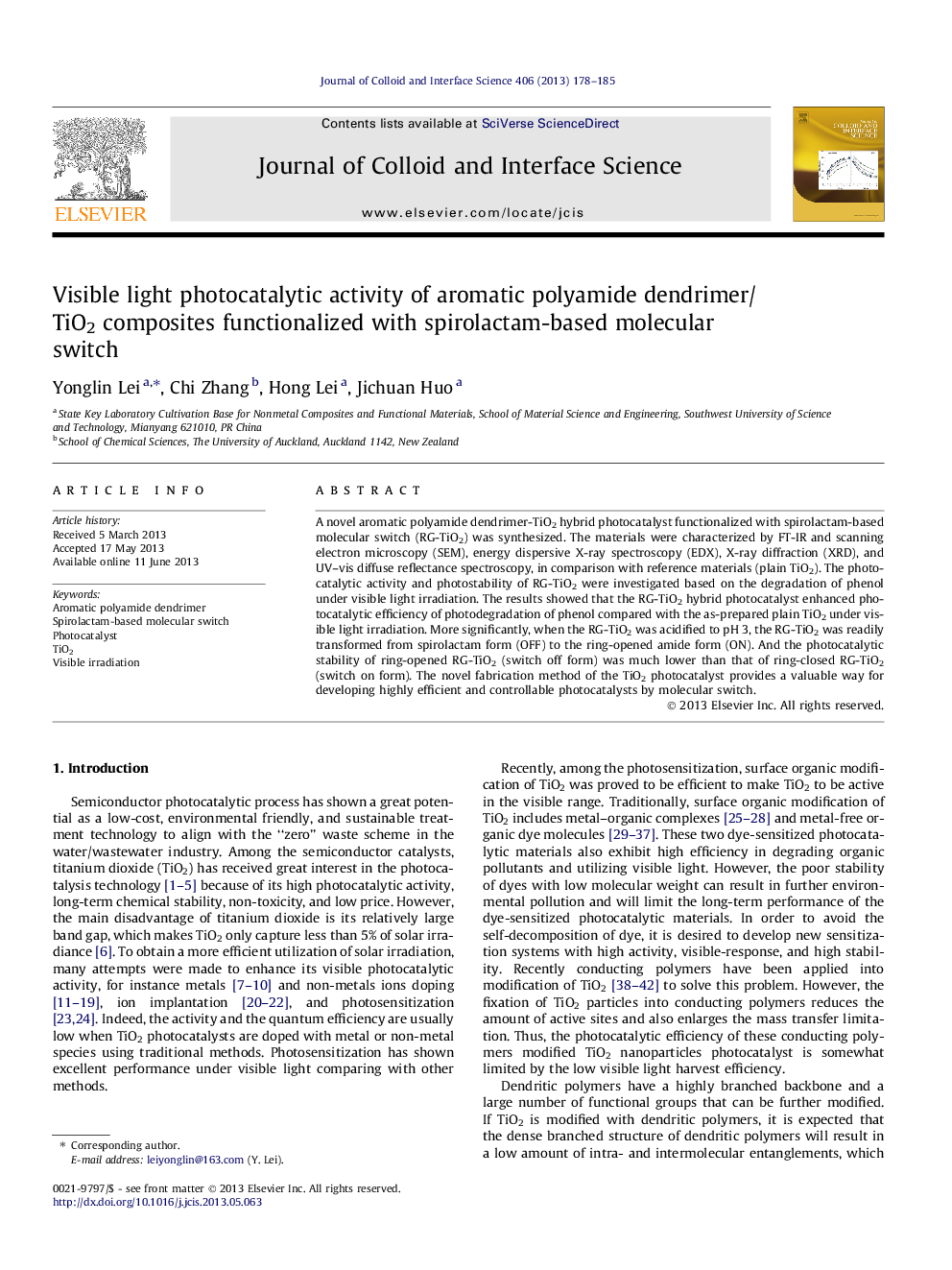| Article ID | Journal | Published Year | Pages | File Type |
|---|---|---|---|---|
| 607614 | Journal of Colloid and Interface Science | 2013 | 8 Pages |
•RG-TiO2 enhances its photocatalytic performance and stability under visible light.•Enhancement is due to LMCT and dye-sensitized mechanism.•The photocatalytic activity can be manipulated by the switching of spirolactam.•It is a new concept for developing controllable photocatalysts by molecular switch.
A novel aromatic polyamide dendrimer-TiO2 hybrid photocatalyst functionalized with spirolactam-based molecular switch (RG-TiO2) was synthesized. The materials were characterized by FT-IR and scanning electron microscopy (SEM), energy dispersive X-ray spectroscopy (EDX), X-ray diffraction (XRD), and UV–vis diffuse reflectance spectroscopy, in comparison with reference materials (plain TiO2). The photocatalytic activity and photostability of RG-TiO2 were investigated based on the degradation of phenol under visible light irradiation. The results showed that the RG-TiO2 hybrid photocatalyst enhanced photocatalytic efficiency of photodegradation of phenol compared with the as-prepared plain TiO2 under visible light irradiation. More significantly, when the RG-TiO2 was acidified to pH 3, the RG-TiO2 was readily transformed from spirolactam form (OFF) to the ring-opened amide form (ON). And the photocatalytic stability of ring-opened RG-TiO2 (switch off form) was much lower than that of ring-closed RG-TiO2 (switch on form). The novel fabrication method of the TiO2 photocatalyst provides a valuable way for developing highly efficient and controllable photocatalysts by molecular switch.
Graphical abstractFigure optionsDownload full-size imageDownload high-quality image (41 K)Download as PowerPoint slide
